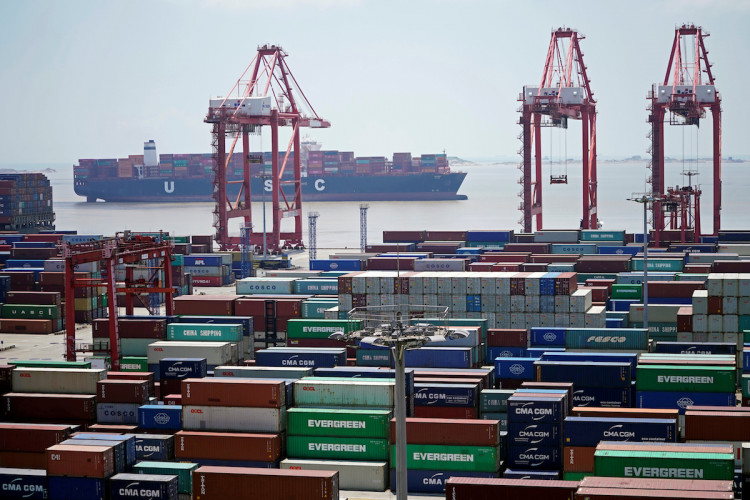The phase one trade deal announced over the weekend, while postponing the Dec. 15 tariffs that were to have been imposed on China, confirms President Donald Trump's failure to achieve a single one of the four major structural demands he said compelled him to launch a trade war against China in 2018. Trump first announced a Phase 1 deal on Oct. 11.
When Trump ignited his trade war against China in July 2018, he made it clear he aimed to halt China's theft of intellectual property rights; end China's forced transfer of technology requirement; curtail Beijing's fiscal support for its state-owned enterprises and force fundamental changes to China's command economy.
None of these goals are even mentioned in phase one. Instead, what Trump got from China was a promise to buy American soybeans and other agricultural products. Trump has not revealed any official proof China even intends to buy up to $50 million in U.S. soybeans. The Trump administration has also no released evidence to back up its claim of a deal, however, nor has it released any of the phase one terms.
Under the still hazy phase one deal, the Trump administration shelved its plan to impose new tariffs on $160 billion of Chinese imports on Dec. 15. U.S. economists said this new tariff round would have led to higher prices on many consumer goods in the U.S. The administration also agreed to cut its existing import taxes on about $112 billion in Chinese goods from 15% to 7.5%. The Trump administration expects a $200 billion boost in exports over two years as a result of phase one.
"We expect the trade deficit to go down for sure," said U.S. Trade Representative Robert Lighthizer. He claims the formal agreement will likely be signed the first week in January and take effect 30 days later.
"Everything is written," he claimed but without any proof. "Everything is finished."
Skeptics noted the Trump administration released no detailed paperwork on the phase one deal.
It's unlikely that deal of Dec. 13 delivers enough benefits for the U.S. to outweigh the costs of the trade fight so far, asserts Mary Lovely, a trade economist at the Peterson Institute for International Economics.
"Many of us are highly skeptical that the agreement will be enough to outweigh these other costs," noted Lovely. "The U.S. didn't move the needle very much."
Scott Kennedy, a China specialist at the Center for Strategic and International Studies (CSIS) agreed, saying with only limited concessions, "China has been able to preserve its mercantilist economic system and continue its discriminatory industrial policies at the expense of China's trading partners and the global economy."
"Trump could reverse course and renew tariffs. But Beijing has bought itself a likely respite from the daily uncertainty for at least a few months and perhaps for the remainder of Trump's current term," Kennedy pointed out.
Trump again claims China has agreed to buy up to $50 billion worth of soybeans. Trump first made this false claim back in October and repeated it over the weekend. In October, Trump claimed China will buy at least $50 billion worth of soybeans in a partial trade accord. The U.S, agriculture experts said this figure was impossible since the largest annual U.S. soybeans sale to China amounted to $27 billion in 2017, the year before Trump launched his trade war. This amount plunged by 98% in 2018 in 2018, according to Torsten Slok, the chief international economist at Deutsche Bank.
China is the world's largest consumer of soybeans. Most of this crop is used to feed its enormous pig population, the world's largest. Soybeans are the top U.S. agricultural export to China.
Treasury Secretary Steven Mnuchin later claimed China will buy from $40 billion to $50 billion worth of soybeans over the next two years, said. U.S. agriculture exports to China totaled $19.5 billion in 2017, government data show.
For its part, China has only said it will lower its trade penalties on American goods and also scrap plans for new punitive tariffs it would have imposed had Trump levied the new tariffs on Oct. 15. It made no mention of agreeing to buy $50 billion worth of U.S. soybeans.
Despite the claimed phase one deal, the U.S. will continue to impose 25% import taxes on $250 billion in Chinese goods. On the other hand, it will halve the tariffs on a separate $112 billion to 7.5%.






